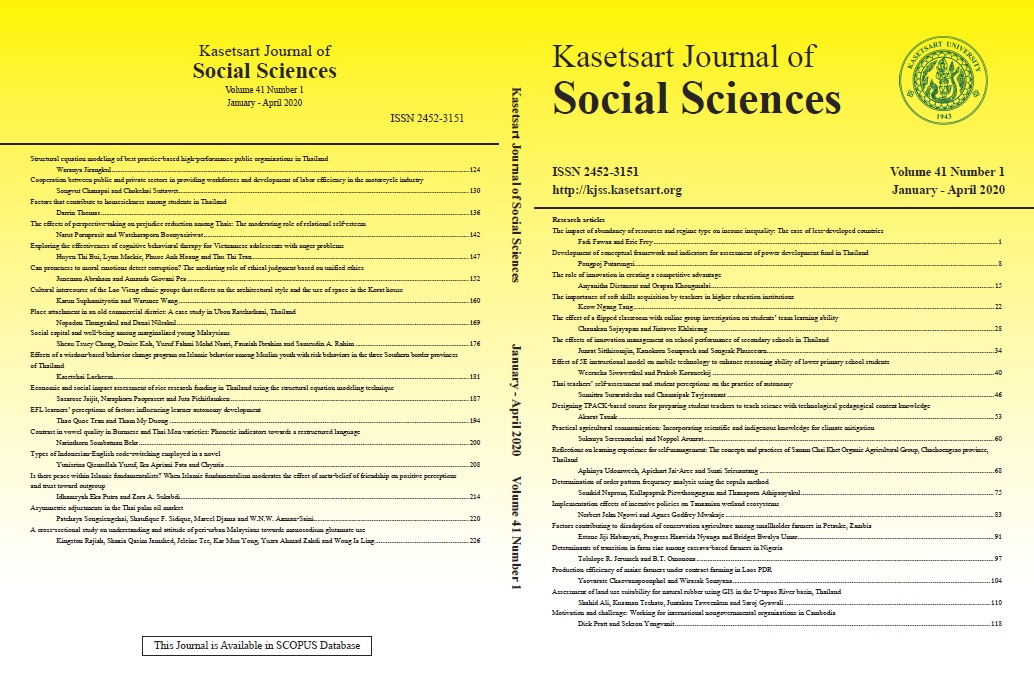Determinants of transition in farm size among cassava-based farmers in Nigeria
Keywords:
agricultural transformation programme, cassava production, farm size, Markov chainAbstract
Cassava production in Nigeria is fraught with varying levels of constraints which reduce its international competitiveness. Consequently, the area of land allotted to cassava production varies widely. This paper analyzed factors that influence changes in farm size among cassava-based farmers in Nigeria. The data employed for the study were sourced from the Living Standards Measurement Study (LSMS)/Integrated Survey Agriculture (ISA) survey which were conducted in 2010/2011 and 2015/2016 covering all 36 states in Nigeria. Analysis was conducted using descriptive statistics, the Markov chain process, and a random effects Poisson model. The Markov analysis revealed that cassava-based farmers in Nigeria are more likely to maintain a small scale level of cassava production or move to a small scale from past medium scale or large scale production. In the long run, the percentages of farmers producing at the small, medium, and large scales were 95.5 percent, 4.28 percent, and 0.24 percent, respectively. The regression results revealed that sex, age, household size, asset ownership, education, cassava income, distance to main road, and access to credit significantly influence change in farm size. The study recommends consistency in agricultural policies and mainstreaming more cassava farmers into the Agricultural
Transformation Program.
Downloads
Published
How to Cite
Issue
Section
License
Copyright (c) 2018 Kasetsart University

This work is licensed under a Creative Commons Attribution-NonCommercial-NoDerivatives 4.0 International License.
This is an open access article under the CC BY-NC-ND license http://creativecommons.org/licenses/by-nc-nd/4.0/










